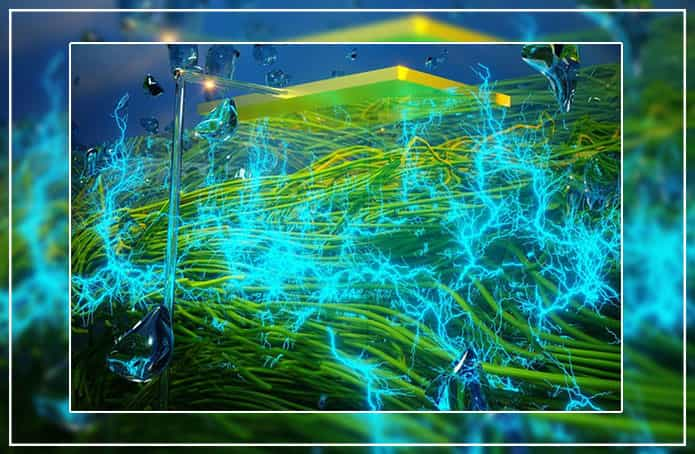New Technology Updates
Usually for the generation of electricity large power plants are required which tends to be non-renewable and have high levels of carbon emission. But, a clean-energy device that generates electricity ‘out of thin air’ has been developed by the scientists from the University of Massachusetts Amherst.
Generate Electricity from Air
Specifically, this air-generator device helps in converting moisture in the air into electricity. The device air-gen uses electrically conductive nanowires made out of protein from a special microbe known as Geobacter. The wires that are about 10 micron/micrometre thick are put down over an electrode surface as thin films. The film is moderately covered from the top by the other electrode which is smaller in size.
These thin films of protein nanowires absorb water vapour from the atmosphere. When the moisture from the air undergoes chemical interactions with the protein, an electrical current is generated between the two electrodes. The electricity generated by the films supply a constant power. Researchers had explained the basic principle behind this new technology, that there develops a self-maintained moisture gradient of the film which keeps absorbing water vapour in the air.
The new device called as air-gen devices can produce a sustained voltage of around 0.5 volts. On this voltage many small electronics devices could be used. But its voltage can be increased by combining small devices to increase the voltage and current to power electronics. In the current findings air-gen devices can power small electronics; researchers will continue to develop the technology for commercial use too. The future plan is for using this tech to power wearables like smartwatches and eventually smartphones.
This new technology would remove the need to periodically charge electronics. Our results demonstrate the feasibility of a continuous energy-harvesting strategy that is less restricted by location or environmental conditions than other sustainable approaches.
To make this technology commercially practicable, researchers have even developed a method to produce the protein nanowires on a large scale. Jun Yao explains they turned a microbial strain of “E. coli into a protein nanowire factory”.
❖ Read More:
➥ Mission Human Flight – China Tianmen Mountain: Expo 2020 Dubai
➥ \Xiaomi Mi 10 Set to Launch Today: Check Expected Price, Specifications
➥ Apple Car key: Might Let You Unlock Car with Your iPhone
➥ World’s First Tesla Powerwall is Paying Itself Off Much Faster than Expected
➥ Sony Amazes With its New Sony Vision S Concept Car






















